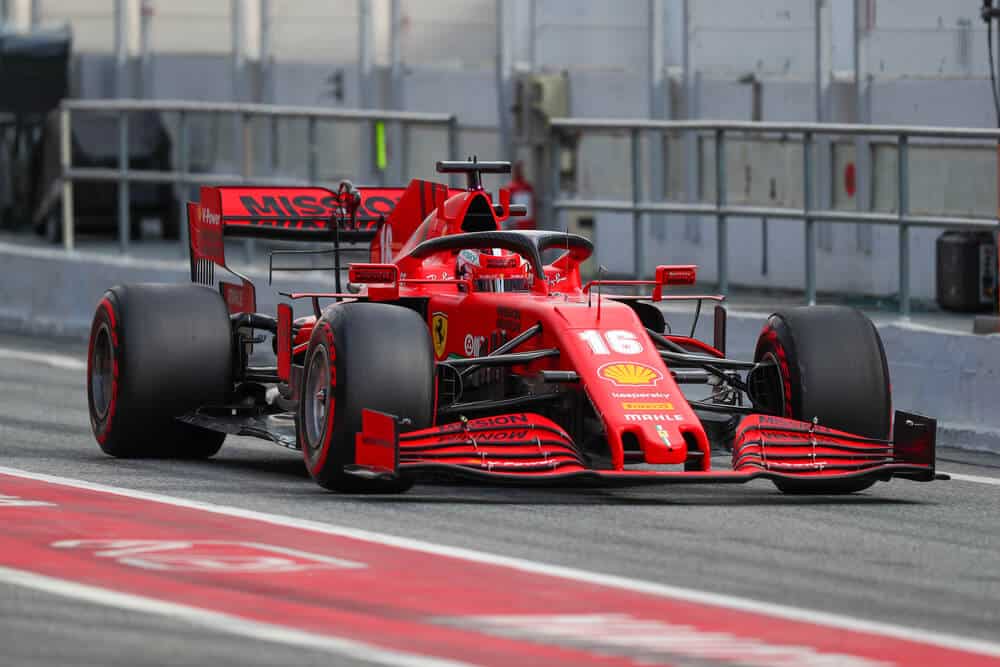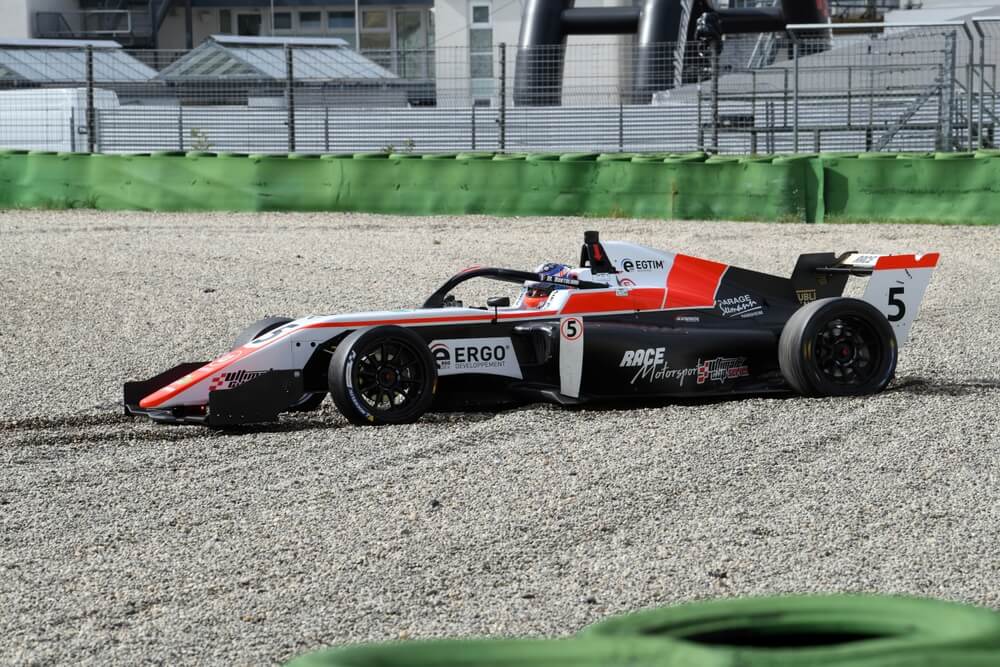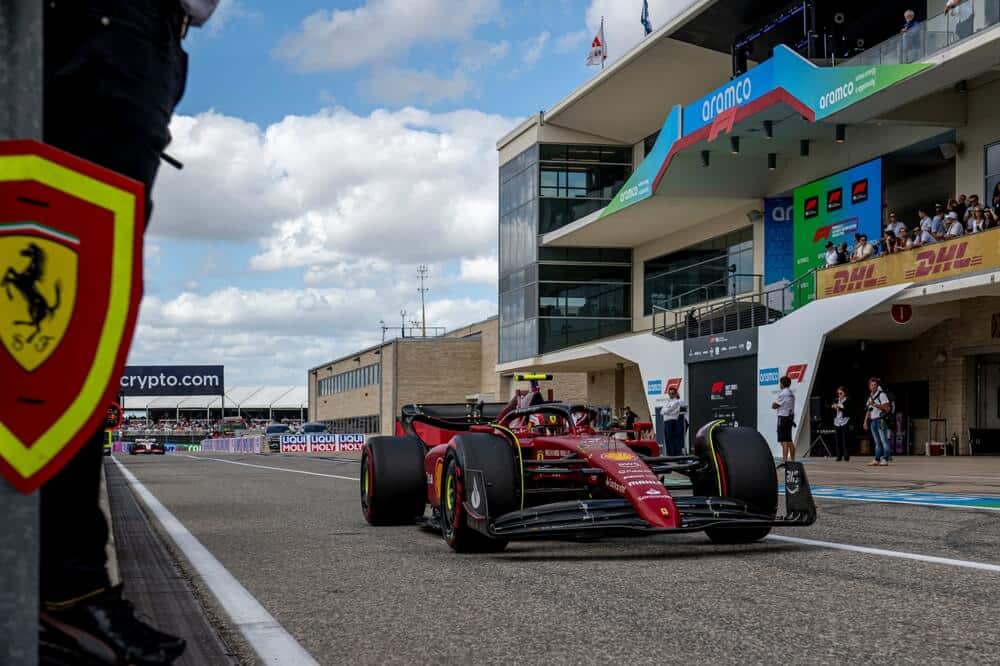Imagine having a car that can go faster with the flip of a switch. That is the idea behind the F-Duct, a revolutionary aerodynamic device that was introduced in 2010.
In this article, we will take a look at what exactly the F-Duct is. Including how it works and why it has been banned in the sport.
Table of Contents
Watch this video to learn more about F-duct.
What is F-Duct?
The F-Duct system is an innovative aerodynamic concept that was introduced to Formula 1 racing in 2010. It allowes drivers to gain a speed boost with the simple flip of a switch.
The F-Duct works by giving the driver control over the air duct from the cab to the rear wing, allowing them to direct more air flow and cause the rear wing to settle on straight lines. This helps to improve the direct speed of the car.
The F-Duct was developed by McLaren in 2010 and quickly copied throughout the Formula 1 racing circuit. The innovation was known internally as project number RW80 and allowed for a reduction in drag, however the device was quickly banned for the 2011 season.
The Technical Aspects of the F-duct
Despite its relatively short lifespan in the sport, the F-Duct was a major technical achievement. It was a complex system based around the manipulation of airflow, allowing drivers to gain a significant speed boost.
Let’s take a better look at the underlying technical aspects behind the F-Duct.
Explanation of the aerodynamic principles behind the F-duct
The whole idea behind the system is to use air passing over the car to change how the rear wing functions. This is done by rerouting air from the front of the car and redirecting it to the back, which results in a decrease in drag and an increase in speed.
This is based on several aerodynamic principles including:
- Bernoulli principle: This principle states that when air is accelerated, its pressure decreases. The F-duct uses this principle to reduce drag, as the air passing over the car is directed to the rear wing which creates a low-pressure area. This reduces drag and gives the car a speed boost.
- Downforce: Downforce is a vertical force that keeps the car on the track and helps it go faster in corners, the F-duct uses airflow over the vehicle to adjust the shape of the rear wing and provide more or less downforce as necessary.
- Drag Reduction: Drag is air resistance acting upon a car and slowing it down. By modifying the shape of the rear wing, the F-duct system reduces drag and increases speed.
- Airflow Management: The F-duct system shows us how managing airflow over a car is important in reaching optimal performance. By redirecting air in an organized manner, the F-duct decreases drag and boost speed.
Challenges involved in designing and implementing an F-duct system
Designing and implementing an F-duct system in a Formula 1 car posed several challenges, including complexity, reliability and integration with other systems. Creating a complex network of channels and valves to redirect air from the front of the car to the rear wing was no easy feat – it took engineering expertise to pull off successfully.
Furthermore, the driver had to activate it using their knee, requiring careful consideration of the control mechanism and responsiveness. The F-duct also had to factor in other systems, such as the cooling system and suspension, all while being lightweight enough to meet Formula 1 cars’ strict weight limits.
Performance gains that can be achieved with an F-duct system
The F-duct system, introduced in 2010 offered significant performance gains by reducing drag and increasing downforce, making cars faster on straightaways and giving them more grip through corners.
This allowed the driver to take more aggressive lines while staying on track. By changing the shape of the rear wing, the F-duct reduced the amount of drag, allowing the car to go faster on straightaways where drag has the biggest impact.
Additionally, downforce was improved as a result of this system, providing more grip and control through corners.
The Controversy Surrounding the F-duct
The F-duct garnered debates and controversies when it debuted in Formula 1 as an innovative solution implemented by McLaren. With it, teams could gain an advantage on track by going faster and being more competitive, which some felt was unfair.
Additionally, the cost associated with implementing the technology combined with already expensive developments made some question its sustainability and positive effect on the sport.
Furthermore, safety concerns arose due to complexity and moving parts. As a result of these issues, the F-duct system was eventually banned by Formula 1.
Despite the device being effective and grabbing the attention of fans, media, and teams alike, the McLaren MP4-25 was still unable to secure victory. However, it still managed to win the Pioneering and Innovation Award at the 2010 Autosport Awards.

Arguments for and against the F-duct
- Argument For:
McLaren’s F-Duct system was a technical marvel, introducing new levels of innovation and creativity to the sport of Formula 1.
The system allowed teams using it to close the gap between themselves and leading teams, increasing competition and making races more exciting for fans. Furthermore, improved aerodynamics using the F-Duct system enabled drivers to go faster and safer on the track.
- Argument Against:
Though impressive, the F-Duct system was seen by some as granting an unfair advantage to teams that used it. Questions were raised about its impact on competition fairness and whether all teams should be allowed to use it.
Additionally, the cost of developing and maintaining such a complex technology posed a serious threat to the sustainability of Formula 1, while its high number of moving parts also raised safety concerns. Therefore, it was ultimately deemed and banned in the sport.
Regulatory changes and rules put in place to address the use of the F-duct in Formula 1
In response to the debates and controversies surrounding the F-duct system, the FIA introduced a new rule for the 2011 season that banned the use of the system. The system was replaced by the Drag Reduction System (DRS). A simpler, more cost-effective device for controlling aerodynamics on the track.
The DRS has since been used and improved to provide teams with a technical advantage over their opponents while still preventing unfair advantages from being gained. This system is now widely accepted as a viable solution that achieves the desired results without compromising fairness or safety.
The Future of the F-duct
Unfortunately, the F-duct has had its time in Formula 1 and will no longer be used. Still, it’s an impressive example of innovation and technology that pushed boundaries while testing the limits of motorsport.
Frequently asked questions
How does an F-duct system work in a Formula 1 car?
What are the aerodynamic principles behind an F-duct system?
How has the use of F-ducts affected Formula 1 racing and competition?
Conclusion
So, there you have it – a brief overview of the F-duct system and its impact on Formula 1 Racing. Its use caused a lot of debate and controversy, but ultimately it was deemed too risky and cost-prohibitive to be allowed in the sport.
Still, its short time in Formula 1 will always be remembered as a fascinating example of innovation and technology. It was eventually replaced by the Drag Reduction System (DRS) which has been used and improved over the years.
Article sources
Learn more about Formula One
Want to learn more about F1? Then visit our Formula 1 glossary and dictionary.



